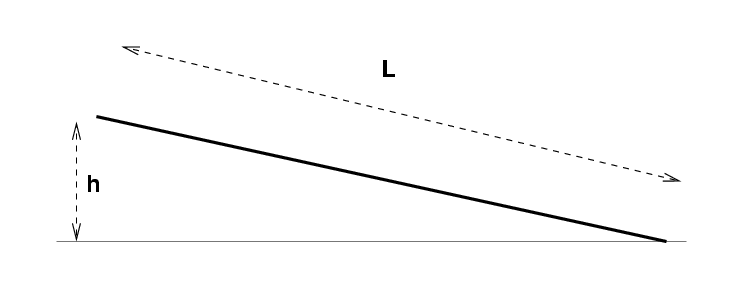
The table in the center of the room has a marked section which
is L in length and rises h from end to end.
We'll measure these values in class and write them on the board.
- What is the acceleration of an object which slides
down the table without friction?
Express this acceleration in two ways:
- in terms of g, h, L
- in cm per second squared, plugging in the actual measurements
- How long should it take for an object to slide without
friction down the table? Again, express this
- in terms of g, h, L
- in seconds, plugging in the actual measurements
There are five objects we will actually send down this table.
They are:
- lacrosse ball (solid)
- racquet ball (hollow)
- wooden disk
- hoop
- Hot Wheels Aston Martin V8 Vantage
Please make a copy of the Google spreadsheet linked below,
and fill in your answers to the questions below in your
copy of the spreadsheet. Only the yellow boxes are required --
the others may simply help you to keep track of the procedure.
- For each type of object,
- write down the moment of inertia, in terms of M and R
- write the total kinetic energy (translational plus rotational)
at the bottom of the table, in terms of M
and the final translational velocity v
- solve for the final velocity v in terms of
g, h
- write down an expression for the linear acceleration of
the object, in terms of g, h, L
- solve for the time t it should take to reach the bottom,
in terms of g, h, L
- plug in values to find time t in seconds
- rank the objects based on the time they should take to
reach the bottom of the table: fastest is "number 1",
next-fastest is "number 2", and so forth.
Near the end of the class period, we will actually send each object
down the table and measure the time it takes to reach the bottom.
You can then compare your predictions with the actual measurements.

